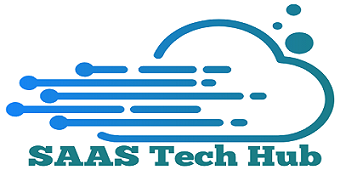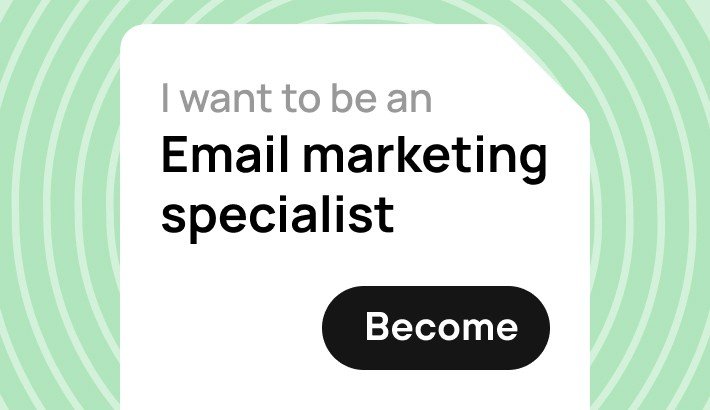Email marketing is a powerful tool for businesses. It connects brands with their audience directly.
Learning how to become proficient in email marketing can boost your career and business success. In today’s digital age, email marketing remains a crucial component of any marketing strategy. It offers a direct line of communication with potential customers and clients.
By mastering email marketing, you can create personalized messages that engage and convert. Whether you’re a business owner, marketer, or aspiring professional, understanding email marketing can set you apart. This blog will guide you through the essential steps and strategies to become proficient in email marketing. Get ready to learn how to craft compelling emails, build strong lists, and analyze results for continuous improvement. Let’s dive in!

Credit: careersidekick.com
Introduction To Email Marketing
Email marketing can help businesses reach customers directly. Learn how to build effective campaigns and engage your audience. Discover key strategies to grow your email list and boost conversions.
Email marketing is a powerful tool for businesses. It involves sending emails to potential customers. These emails can be promotional, informational, or both. The goal is to build relationships with your audience. It also helps in driving conversions and sales. Emails allow businesses to reach a large audience. You can also target specific groups with personalized messages. This makes email marketing very effective. It is also cost-efficient compared to other marketing methods.Importance Of Email Marketing
Email marketing is crucial for businesses today. It offers direct communication with your audience. You can share updates, offers, and important news. This helps in keeping your customers engaged and informed. It also builds trust and loyalty. Regular emails show that you value your customers. This can lead to increased customer retention. A loyal customer is more likely to make repeat purchases.Key Benefits For Businesses
Email marketing offers many benefits for businesses. It is cost-effective. Sending emails is cheaper than traditional advertising. This makes it ideal for businesses of all sizes. Emails are also measurable. You can track open rates, click-through rates, and conversions. This helps in understanding what works and what doesn’t. You can then improve your future campaigns. Another benefit is personalization. You can send targeted emails to different segments. This increases the chances of engagement and conversions. Personalization makes your audience feel valued. In conclusion, email marketing is a powerful tool. It offers many benefits for businesses. It helps in building relationships and driving sales. “`
Credit: www.wethos.co
Building An Email List
Building a strong email list is crucial for successful email marketing. A well-curated email list connects you with your audience and drives engagement. But how do you create this list? Let’s break it down.
Effective Lead Generation Strategies
Lead generation is the first step in building an email list. Use these strategies to attract potential subscribers:
- Offer valuable content: Create e-books, guides, or webinars.
- Leverage social media: Share your signup link on social platforms.
- Run contests and giveaways: Attract people with exciting prizes.
- Collaborate with influencers: Partner with industry influencers to reach a wider audience.
Using Signup Forms And Landing Pages
Signup forms and landing pages are essential for collecting email addresses. Here’s how to make them effective:
- Design clear forms: Keep your signup forms simple and user-friendly.
- Highlight benefits: Make it clear what subscribers will gain.
- Use strong CTAs: Encourage action with compelling calls-to-action.
- Optimize for mobile: Ensure your forms and pages look good on all devices.
Here’s a basic example of a signup form:
Creating effective signup forms and landing pages will help you build a strong email list.
Creating Compelling Content
Creating compelling content is crucial for email marketing success. The content must grab attention, engage readers, and drive action. This involves several key elements, including crafting engaging subject lines and writing persuasive email copy.
Crafting Engaging Subject Lines
The subject line is the first thing your audience sees. It determines if your email gets opened. To craft engaging subject lines, follow these tips:
- Keep it short and to the point. Aim for 6-10 words.
- Use action verbs to drive urgency and excitement.
- Personalize when possible. Include the recipient’s name.
- Avoid spammy words. Stay away from “free,” “buy now,” or “urgent.”
- Test different subject lines. Analyze which perform best.
Writing Persuasive Email Copy
Your email copy should be clear, concise, and compelling. Here are key strategies:
- Start with a strong opening line: Capture interest immediately.
- Focus on benefits: Highlight what the reader gains.
- Use short paragraphs: Break text into small chunks.
- Include a clear call-to-action (CTA): Guide the reader on what to do next.
- Maintain a conversational tone: Write like you speak to a friend.
- Use bullet points: Make the content easy to scan.
By following these tips, you can create content that engages and converts your audience.
Designing Attractive Emails
Designing attractive emails is crucial for successful email marketing. Beautiful, well-structured emails can grab attention and engage readers. Focus on visual appeal and layout for better results. Here’s how to design emails that stand out and captivate your audience.
Email Templates And Layouts
Email templates save time and ensure consistency. Choose a template that aligns with your brand. Use a simple, clean layout. Keep the design uncluttered to avoid overwhelming readers. Place important information at the top. Make sure the text is easy to read. Use short sentences and bullet points for better readability.
Incorporating Visual Elements
Visual elements make emails more engaging. Use high-quality images that relate to your content. Add relevant images to break up text. This keeps readers interested. Include your logo to reinforce your brand. Use colors that match your brand’s palette. Don’t overuse colors; two to three are enough. Add buttons for calls to action (CTAs). Ensure they are easily noticeable. Use icons to highlight key points. This makes the content more digestible.
Segmentation And Personalization
Email marketing is a powerful tool for businesses. Two key elements that drive its success are segmentation and personalization. By segmenting your audience and personalizing email campaigns, you can engage your subscribers more effectively. This leads to higher open rates, click-through rates, and conversions.
Segmenting Your Audience
Segmenting your audience means dividing your email list into smaller groups. These groups share common characteristics. You can segment based on demographics, purchase history, or engagement levels. For example, create segments for new subscribers, frequent buyers, or inactive users.
Using segmentation allows you to send more targeted emails. Targeted emails are more relevant to the recipients. This increases the chances of your emails being opened and read. It also helps in reducing the unsubscribe rate.
Personalizing Email Campaigns
Personalizing email campaigns means tailoring your emails to individual subscribers. Start with using the subscriber’s name in the subject line or email body. Personalization can also include recommending products based on past purchases.
Another way to personalize is by sending emails based on subscriber behavior. For example, send a follow-up email if someone abandons their cart. Or, send a thank you email after a purchase.
Personalized emails make the subscriber feel valued. This builds a stronger relationship between your brand and the subscriber. It can lead to increased loyalty and higher engagement.
Automation And Workflows
Automation and workflows in email marketing can save time and increase efficiency. They help deliver the right message to the right audience at the right time. Let’s dive into setting up automated campaigns and using drip marketing.
Setting Up Automated Campaigns
Setting up automated campaigns is simple and effective. It ensures your emails reach subscribers without manual intervention.
- Choose the Right Tool: Select an email marketing platform that supports automation. Popular choices include Mailchimp, HubSpot, and ConvertKit.
- Define Your Goals: Decide what you want to achieve. Is it to welcome new subscribers, nurture leads, or re-engage inactive users?
- Segment Your Audience: Group your audience based on their behavior, preferences, or demographics. This ensures personalized content.
- Create Triggers: Set up triggers that will start the automation. Common triggers include user sign-up, purchase, or abandoned cart.
- Design the Email Sequence: Plan the sequence of emails. For example, a welcome series might include a thank-you email, a follow-up, and a special offer.
- Test and Refine: Test your automated campaigns before launching. Check for errors and make necessary adjustments.
Using Drip Marketing
Drip marketing involves sending a series of pre-written emails to prospects over time. It nurtures leads and guides them through the sales funnel.
- Identify Your Audience: Understand who your target audience is. This helps in tailoring the content to their needs.
- Set Clear Objectives: Know what you want to achieve with your drip campaign. Are you educating your audience, promoting a product, or building trust?
- Create Valuable Content: Provide useful and engaging content in each email. This keeps your audience interested and engaged.
- Schedule Your Emails: Decide the frequency and timing of your emails. Ensure they are spaced out appropriately to avoid overwhelming your audience.
- Analyze and Optimize: Monitor the performance of your drip campaigns. Use analytics to identify what works and improve future emails.
Automation and workflows make email marketing more efficient. They help deliver timely and relevant content to your audience.
Analyzing And Optimizing Performance
Analyzing and optimizing performance is crucial for email marketing success. You need to understand how your emails perform to improve them. This involves tracking key metrics and using A/B testing.
Tracking Key Metrics
Tracking key metrics helps you see how your emails perform. Here are some important metrics to monitor:
- Open Rate: The percentage of recipients who open your email.
- Click-Through Rate (CTR): The percentage of recipients who click a link in your email.
- Bounce Rate: The percentage of emails that could not be delivered.
- Conversion Rate: The percentage of recipients who complete a desired action after clicking a link.
- Unsubscribe Rate: The percentage of recipients who unsubscribe from your email list.
Tracking these metrics helps you understand your email performance. You can identify what works and what needs improvement.
A/b Testing For Better Results
A/B testing, or split testing, compares two versions of an email to see which performs better. This helps you make data-driven decisions.
- Create Two Variations: Change one element, such as subject line or call-to-action.
- Send to a Small Segment: Send each version to a small part of your audience.
- Analyze Results: Check which version has better metrics.
- Implement the Winner: Use the better-performing version for the rest of your audience.
This method helps you refine your emails. You can continuously improve and get better results over time.
By tracking key metrics and using A/B testing, you can optimize your email marketing. This leads to better engagement and higher conversions.

Credit: emeritus.org
Staying Compliant With Regulations
Staying compliant with email marketing regulations is crucial. It protects your business from legal issues. It also builds trust with your subscribers. Understanding the key regulations and best practices will help you achieve this. Here’s a guide to help you stay compliant.
Understanding Gdpr And Can-spam
The General Data Protection Regulation (GDPR) is a regulation in the EU. It focuses on data protection and privacy. It requires businesses to get consent before sending emails. It also allows subscribers to withdraw consent easily.
The CAN-SPAM Act is a law in the USA. It sets rules for commercial emails. It gives recipients the right to stop emails from being sent to them. It also outlines penalties for violations.
| Regulation | Region | Key Requirements |
|---|---|---|
| GDPR | EU | Consent, Data Protection, Right to Withdraw |
| CAN-SPAM | USA | Right to Opt-Out, Accurate Header Information |
Best Practices For Compliance
Following best practices ensures compliance. Here are some key points:
- Get Clear Consent: Always ask for permission before sending emails.
- Provide Easy Opt-Out: Include an unsubscribe link in every email.
- Use Accurate Information: Ensure your header and subject lines are truthful.
- Protect Data: Secure your subscribers’ data against breaches.
- Monitor Compliance: Regularly review your practices to stay up-to-date with laws.
By following these steps, you can stay compliant. It will also help you build a trustworthy email marketing strategy.
Advanced Strategies
Embarking on the journey of email marketing requires advanced strategies. These strategies help you stay ahead of the competition. They also enhance your email campaigns’ effectiveness. Here, we will delve into two key areas: Integrating Email with Other Channels and Using AI and Machine Learning.
Integrating Email With Other Channels
Successful email marketing doesn’t exist in isolation. It works best when combined with other channels.
Here are some ways to integrate email with other marketing channels:
- Social Media: Use email to share social media content. Encourage subscribers to follow your social media pages.
- Content Marketing: Promote blog posts, videos, and other content through email. This drives traffic to your website.
- Webinars and Events: Send email invites. Follow up with reminders and thank-you notes.
Integration ensures a cohesive brand message. It enhances customer engagement and boosts conversion rates.
Using Ai And Machine Learning
Artificial Intelligence (AI) and Machine Learning (ML) are transforming email marketing.
Here is how you can leverage AI and ML:
| Strategy | Benefits |
|---|---|
| Personalization | AI helps create personalized content. This improves open and click-through rates. |
| Segmentation | ML analyzes data to segment your audience. This leads to more targeted campaigns. |
| Automation | AI automates email responses. It saves time and ensures timely communication. |
AI and ML provide valuable insights. They help optimize your email marketing efforts.
Conclusion And Next Steps
Gaining skills in email marketing can boost your career. Focus on learning best practices and continuously refining your strategy.
The journey to becoming proficient in email marketing involves learning, practice, and patience. This section will sum up the key points covered and offer resources for further learning.Recap Of Key Points
To start with, understanding your audience is crucial. Knowing their needs helps create targeted content. Also, crafting engaging subject lines boosts open rates. Personalization and segmentation ensure your emails are relevant. Testing and optimizing campaigns improve performance. Analytics help track success and identify areas for improvement.Resources For Further Learning
There are many resources to deepen your knowledge. Online courses provide structured learning. Websites like HubSpot and Mailchimp offer valuable guides. Joining email marketing communities can give you practical insights and tips. Books by experts can offer in-depth understanding. To continue growing, practice regularly. Experiment with different strategies. Stay updated with industry trends. Learning never stops in email marketing. Keep refining your skills for better results. “`Frequently Asked Questions
What Is Email Marketing?
Email marketing is a digital strategy to promote products or services. It involves sending emails to prospects and customers. This helps in building relationships, driving sales, and keeping customers informed.
How To Start Email Marketing?
To start email marketing, choose an email marketing platform. Build an email list, create engaging content, and schedule campaigns. Analyze results to improve future emails.
What Tools Are Best For Email Marketing?
Popular email marketing tools include Mailchimp, Constant Contact, and Sendinblue. These platforms offer features like automation, templates, and analytics.
How To Write Effective Email Subject Lines?
Write clear, concise, and compelling subject lines. Use action words, personalize with recipient’s name, and create a sense of urgency. Avoid spammy words.
Conclusion
Becoming proficient in email marketing takes time and practice. Start small. Focus on building a quality subscriber list. Experiment with different email formats. Analyze your results. Learn from your mistakes. Keep your messages clear and engaging. Always provide value to your readers.
Adapt to changes and trends in email marketing. Stay consistent and patient. Success will follow with persistence and dedication. Happy emailing!


